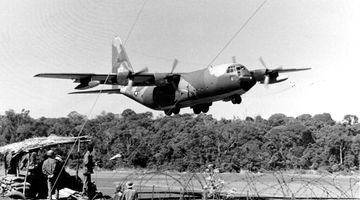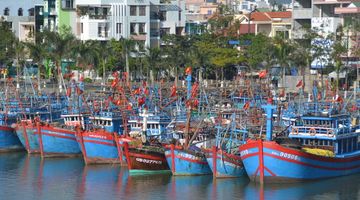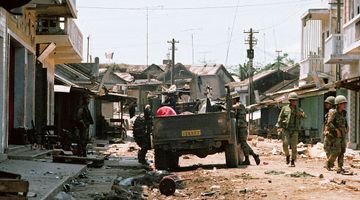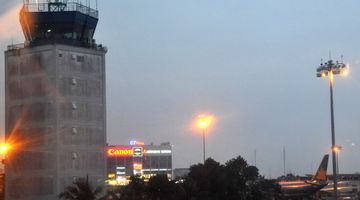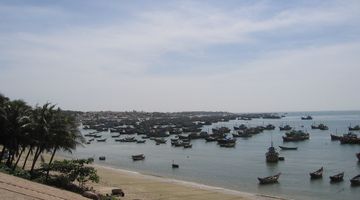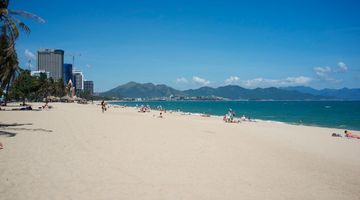Travel in Vietnam – The Useful Transport Guide
Vietnam is one of the countries in Southeast Asia you need to travel to at least once in your lifetime. This developing nation has a lot to offer for adventurous travellers.
You can reach every part of the country either by air, land and even water. This article describes everything you need to know about transport in Vietnam to help you choose the best way to get around and avoid being ripped off.
What’s the best way to get around in Vietnam?
There are many ways to get around Vietnam, which depends on your preference and budget. It's easy to get a domestic flight in Vietnam, and it's also straightforward to travel long distances using the bus or train. Some tourists like to rent a motorbike and plan a road trip around the country. Many tour companies also offer private cars with a driver to take you around.
For short distances, public buses with very cheap fares are in all cities. You can also take a taxi or use services like Uber or GrabCar.
Flying in Vietnam
There are three major airline companies in Vietnam including Vietnam Airlines, Vietjet Air and Jetstar Pacific. The first is more expensive than the other two.
Vietnam Airlines operates to and from several major countries in Europe including Russia and the United Kingdom. Vietjet Air or Jetstar Pacific are more affordable for domestic travel and to neighbouring countries in Southeast Asia.
You can get to Danang, Dalat, Phan Thiet and Phu Quoc from Hanoi or Saigon easily. All three airline companies cover these routes, and it all depends on your budget and dates as to which carrier you should take. For example, Hanoi to Saigon takes at least two hours and cost around $40 one way per person on VietJet or $140 on Vietnam Airlines.
Typical routes from both Hanoi and Saigon are to Phan Thiet, Dalat, Da Nang and Phu Quoc Island.
One of the disadvantages of using low-cost airlines is that their check-in counter usually opens just two hours before take-off. Web check-in is available, but you need to get a stamp from the check-in counter on your printed ticket before passing through immigration.
Taking the train
A good way to experience Vietnam is by taking the train. Trains are slow, and prices vary depending on the journey and type of seat. Expect anywhere between $15 and $60 for a one-way ticket. We accept bookings for railway tickets one year prior to your trip so you can be sure you'll get the seats you want. It's advisable to book your tickets in advance if you know the dates of travel.
You have the option to choose between a hard and soft seat for shorter journeys and booking a berth for longer trips. Berths are relatively comfortable with air conditioning, a reading light and a socket to charge your electronics.
Food and drinks are available, but the selection is often limited to light snacks such as instant noodles. Taking the train from Hanoi to Saigon is a very long way. Fly instead.
Popular train routes include Hanoi to Lao Cai (Sapa), Hue, Danang. Or from Saigon to Phan Thiet, Mui Ne, Nha Trang, Danang, and Hue.
Long distance buses
Taking the bus to other parts of Vietnam is common and relatively cheap. The roads are better than they once were but still may not be in the best conditions. And drivers are sometimes reckless. In many cases, paying a little extra and flying is a better option.
Sleeper buses are available on the long distance journeys. But don’t expect much space, especially for taller westerners. Expect to pay between $10 and $17 for a one-way ticket depending on the bus company.
If you're travelling in a group, consider booking a van (available here) and sharing the cost.
The typical long-distance bus routes are as follows:
Hanoi to Ha Giang 6.5 to 7 hours
Hanoi to Sapa 5 to 6 hours
Hanoi to Halong Bay 3 hours
Saigon to Phan Thiet/ Mui Ne 4.5 to hours
Dalat to Phan Thiet 4 hours
Dalat to Nha Trang 3.5 hours
Using ferries
Previously, getting to and from Vung Tau was by hydrofoil. This has now upgraded to a newer system for to safety reasons.
The usual ferry route is from Saigon to Vung Tau and back. The ferry port in Saigon is in Ben Nghe, District 1. It takes about two hours, and tickets cost approximately 220,000-270,000 VND.
There are daily departures to and from Saigon between 8 am and 3.30 pm. Greenlines are the primary company to operate this route, and you can make bookings here.
Taxis
Mai Linh and Vinasun are the best taxi companies in Vietnam. All should use a meter, and scams by these reputable companies are rare. Fares usually start at around 11,000 to 12,000 VND. Even though they’re trustworthy, it's best to have smaller notes to give the exact fare to the driver. A typical scam is for the taxi driver to claim that he doesn’t have enough lower denominations to return the change.
The airport shuttle bus
Tan Son Nhat Airport, Saigon
There are now dedicated shuttle buses from Tan Son Nhat Airport in Saigon to Ben Thanh Market in District 1. Take the Yellow 109 bus for 20,000 VND ($1), and you shouldn’t face extra fees for luggage. You can also use the yellow bus 47 for 40,000 VND ($2), which drops you off at your hotel.
For a more local experience, take the green bus (152) to the city for 5000 VND ($0.25). However, you do need to pay extra for luggage, and the amount depends on how much you have. It's best to take the yellow buses to avoid confusion and paying their fixed price, especially if you have luggage.
Noi Bai Airport, Hanoi
You can take the city bus number 7 or 17 to the city centre. The journey is approximately an hour and costs 5,000 VND ($0.25). The bus stop at Noi Bai Airport is on the right side of the terminal exit.
The public bus
Using the public bus to get around the cities is cheap. Typical fares cost no more than 6000VND or about 0.30 cents. Public buses are numbered so if you know the right bus, and where to stop, give it a try.
The disadvantages of using the public bus are that they tend to be old and without air conditioning. Expect them to be crowded and not allowing passengers to get on or off before pulling away. Drivers tend to slow down, almost to a stopping position for passengers to jump in and out quickly. Buses usually drive in the fast lane and swerve through the other lanes without any regard to other motorists.
GrabCar and Uber
Uber and GrabCar are the best alternatives to using metered taxis in Vietnam. GrabCar is widely used in South East Asia whereas Uber is popular around the world. There's also GrabBike if you want to experience the roads of Vietnam but aren’t brave enough to drive yourself. It's much quicker and cheaper than using the car but be prepared to feel the chaos, especially during rush hour. Expect to pay no more than a few dollars to get around the city, GrabBikes are cheaper.
You’ll need to get a SIM card with an Internet package to use these services in Vietnam before downloading the respective app. SIM Cards are cheap and are worth it for the money saved in getting around the city compared to relying on metered taxis. The routes are fixed and you need to rate the driver on their honesty and driving skills giving an incentive to drive safely.
The xe om
Motorbike taxis, or Xe Om as the locals call it, is similar to GrabBike. But you need to negotiate a price before you get on one. Most drivers tend to overcharge tourists for even the shortest of journeys, especially the ones who drive up beside you offering their services. Another typical scam is to take you the long way round in an attempt to get more money from you. If you do want to use a Xe Om, it’s best to get a referral from a local.
Outside of the tourist areas, most drivers don't speak English. The solution is to write the address or have a local talk to them. Drivers may take you to the wrong destination and still demand a high fare. Always agree on a fixed price beforehand.
Most motorcyclists in Vietnam are reckless and drive dangerously, and the Xe Oms are often the worst culprits. If you have an honest driver, they want to deliver the passenger as fast as they can. It’s not uncommon for foreign tourists to injure themselves in an accident with a motorbike taxi.
Riding a motorbike
If you're confident riding a bike and want to explore the city on your own, renting a motorbike in Vietnam is easy. Some places don't ask for an International driving license. Depending on the type of bike you want, a rental typically starts from $10 per day up to $50. A good rental company provides you with a motorbike in good condition delivering and collecting it from you.
If you’re planning on spending longer than a month in Vietnam, consider buying a cheap bike for as little as $200. However, don’t expect it to be in the best condition. You can spend a bit more and get a scooter or automatic that’s less likely to break down all the time. Filling up the tank in Vietnam is cheap.
Using a bicycle
Locals get around using old push bikes. In the bigger cities like Hanoi and Saigon, it's probably best not the best idea to cycle. Reckless driving and a lack of a designated bike paths make riding your bicycle dangerous. Smaller towns and cities, such as Danang and Hoi An are friendlier to cyclists. You can rent one for a little as a few dollars per day. Although a helmet isn’t mandatory, consider wearing one anyway.
Everything you need to know about transport in Vietnam
Now that you have an idea of how to get around Vietnam start planning your trip. Travelling between the main cities is easy, and you have a variety of options available to you including flying, taking the bus, and trains. Rely on GrabCar or Uber to travel around the city centre or use the very affordable public bus.
